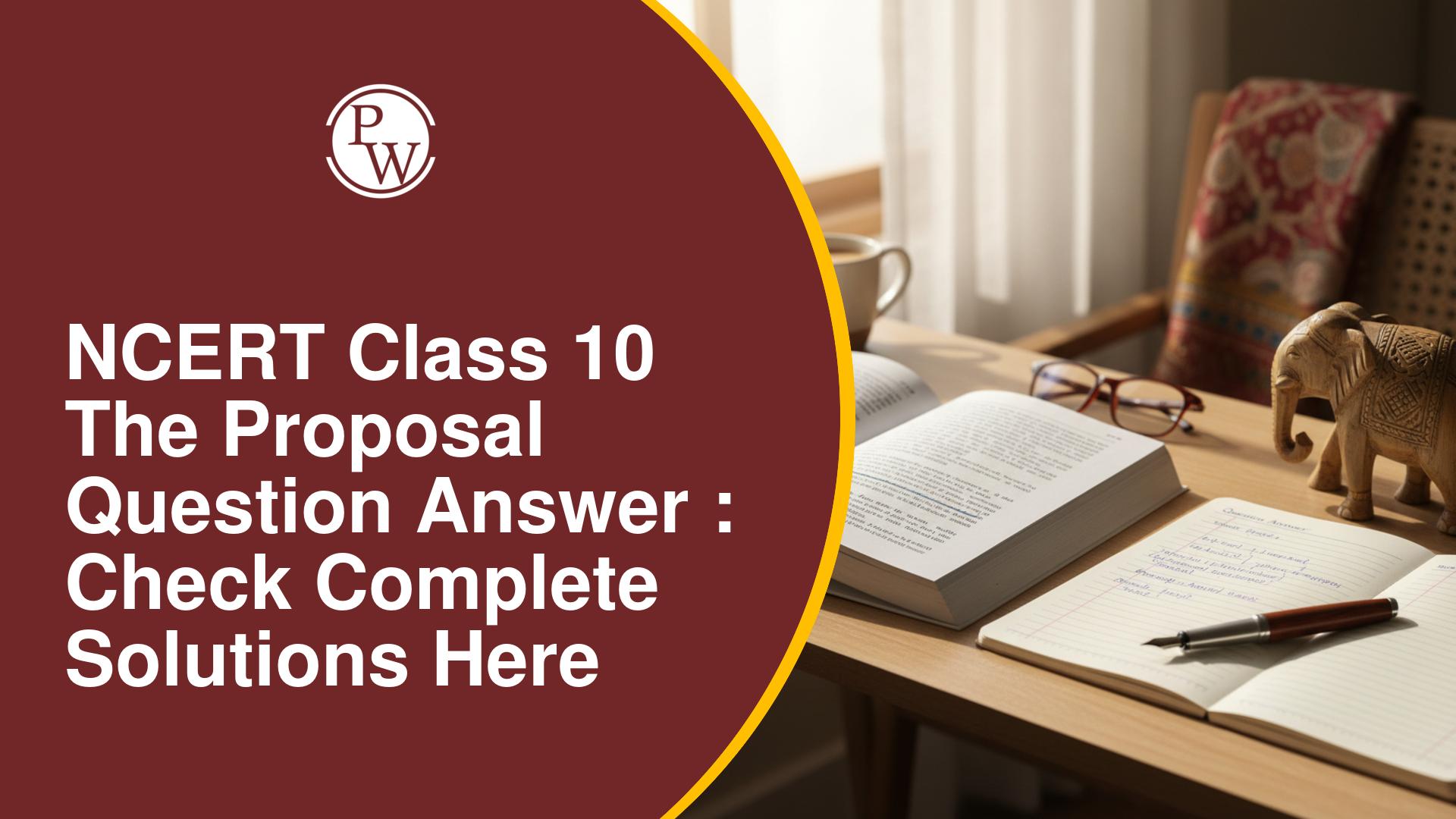
Important Questions for Class 10 Maths Chapter 5 : The following important questions for Class 10 Mathematics, specifically for Chapter 5 Arithmetic Progression. These questions have been created to aid students in their preparation for the upcoming board exams in the academic year 2022-2023.
Aligned with the NCERT book and CBSE syllabus, these important questions have been formulated through extensive research on exam patterns, previous year papers, exam trends, and the latest sample papers from 2022-23. By engaging with these questions, students can enhance their performance and secure high marks in the Mathematics exam. The solutions accompanying each question enable students to cross-check their answers, facilitating a more thorough understanding of the concepts. We strongly recommend students to dedicate time to solving and practicing these questions, as it will not only bolster their confidence but also provide valuable exam-oriented practice.Important Questions for Class 10 Maths Chapter 5 Arithmetic Progression
Arithmetic Progression delves into the notion of a sequence exhibiting a discernible pattern, characterized by a constant difference between each term in the given series. Throughout this chapter, students will encounter topics such as determining the nth term of Arithmetic Progression and calculating the sum of n terms using the pertinent formulas. This foundational understanding is crucial for mastering the subject matter and excelling in the examination.CBSE Important Questions for Class 10 Maths
Important Questions for Class 10 Maths Chapter 5 Overview
The overview of important questions for Class 10 Maths Chapter 5, focusing on Arithmetic Progression, is integral for students preparing for their board exams. This chapter delves into the fundamental concepts of Arithmetic Progression (AP), covering crucial topics such as the identification of AP, understanding the common difference, and the formulas for finding the nth term and the sum of n terms in an AP. The set of important questions has been thoughtfully curated to encompass a diverse range of scenarios, ensuring comprehensive coverage of the chapter. By engaging with these questions, students can fortify their conceptual understanding, refine their problem-solving skills, and gain familiarity with the exam pattern. The accompanying solutions facilitate self-assessment, providing students with a valuable tool to gauge their proficiency, rectify errors, and reinforce the step-by-step solving process. These important questions are a strategic resource, offering a focused approach to revision and exam preparation, ultimately contributing to a confident and proficient performance in the Class 10 Maths board exams.Important Questions For Class 10 Chapter 5 With Solutions
Q.1: Which term of the AP: 21, 18, 15, . . . is – 81? Also, is any term 0? Give reason for your answer.
Solution:
Given AP: 21, 18, 15,… Here, a = 21, d = 18 – 21 = –3 Let nth term of the given AP is -81. So, an = –81 As we know, an = a + ( n – 1) d Thus, – 81 = 21 + (n – 1)(– 3) – 81 = 24 – 3n – 105 = – 3n So, n = 35 Therefore, the 35th term of the given AP is – 81. Next, we want to know if there is any n for which an = 0. If such an n is there, then; 21 + (n – 1) (–3) = 0 ⇒ 3(n – 1) = 21 ⇒ n – 1 = 7 ⇒ n = 8 Therefore, the eighth term is 0.Q.2: Find the
term from the end of the AP
.
Solution: Given AP
Last term is
from end is
Putting the values we get,
Solution: Given that,
3rd term, a3 = 4 9th term, a9 = −8 We know that, the nth term of AP is; an = a + (n − 1) d Therefore, a3 = a + (3 − 1) d 4 = a + 2d ……………………………………… (i) a9 = a + (9 − 1) d −8 = a + 8d ………………………………………………… (ii) On subtracting equation (i) from (ii), we get; −12 = 6d d = −2 Substituting d = -2 in equation (i), we get; 4 = a + 2 (−2) 4 = a − 4 a = 8 Let nth term of this AP be zero. an = a + (n − 1) d 0 = 8 + (n − 1) (−2) 0 = 8 − 2n + 2 2n = 10 ⇒ n = 5 Hence, 5th term of the given AP is 0.Q.4: Find the sum of first 40
positive integers divisible by 6
also find the sum of first 20
positive integers divisible by 5
or 6
.
Solution: Numbers which are divisible by 6
are 6,12,18,...,240 Using the formula, Sn=n2[2a+(n−1)d] ⇒S40=402[12+39(6)] ∴S40=4920 Numbers div by 5 or 6 are 30,60,...600 Using the formula, Sn=n2[2a+(n−1)d] ⇒S20=202[60+19(30)] ∴S20=6300Q.5: How many multiples of 4 lie between 10 and 250?
Solution:
The first multiple of 4 that is greater than 10 is 12. The next multiple will be 16. Therefore, the series formed as; 12, 16, 20, 24, … All these are divisible by 4 and thus, all these are terms of an AP with the first term as 12 and the common difference as 4. When we divide 250 by 4, the remainder will be 2. Therefore, 250 − 2 = 248 is divisible by 4. The series is as follows. 12, 16, 20, 24, …, 248 Let 248 be the nth term of this AP. First term, a = 12 Common difference, d = 4 an = 248 As we know, an = a + (n – 1) d 248 = 12 + (n – 1) × 4 ⇒ 236/4 = n – 1 ⇒ 59 = n – 1 ⇒ n = 60 Therefore, there are 60 multiples of 4 between 10 and 250.Q.6: Find the sum of all three-digit numbers which leave remainder 3
when divided by 5.
Solution: Three-digit numbers which leave remainder 3
when divided by 5 are 103,108,...,998 To find n , an=a+(n−1)d ⇒998=103+5(n−1) ∴n=180 To find sum use the formula, Sn=n2[2a+(n−1)d] ⇒S180=1802[2(103)+5(180−1)] ∴S180=99090Q.7: Ramkali saved Rs 5 in the first week of a year and then increased her weekly saving by Rs 1.75. If in the nth week, her weekly savings become Rs 20.75, find n.
Solution:
Given that, Ramkali saved Rs.5 in the first week and then started increasing her savings each week by Rs.1.75. Hence, First term, a = 5 and common difference, d = 1.75 Also given, an = 20.75 Find, n = ? As we know, by the nth term formula, an = a + (n − 1) d Therefore, 20.75 = 5 + (n – 1) × 1.75 15.75 = (n – 1) × 1.75 (n – 1) = 15.75/1.75 = 1575/175 = 63/7 = 9 ⇒ n = 10 Hence, n is 10.Q.9: The first term of an AP is 5, the last term is 45 and the sum is 400. Find the number of terms and the common difference.
Solution:
Given that, first term, a = 5 last term, l = 45 Sum of the AP, Sn = 400 As we know, the sum of AP formula is; Sn = n/2 (a + l) 400 = n/2 (5 + 45) 400 = n/2 (50) Number of terms, n = 16 As we know, the last term of AP can be written as; Last term, l = a + (n − 1) d 45 = 5 + (16 − 1) d 40 = 15d Therefore, the Common difference is d = 40/15 = 8/3.Q.10: Prove that am+n+am−n=2am.
Solution: We know that,
an=a+(n−1)d Therefore, am+n=a1+(m+n−1)d …(1) am−n=a1+(m−n−1)d …(2) am=a1+(m−1)d …(3) Adding equations (1) and (2), am+n+am−n=a1+(m+n−1)d+a1+(m−n−1)d am+n+am−n=2[a1+(m−1)d] From equation (3) we can conclude that, am+n+am−n=2am Hence proved.Q.11. If the sum of the first n terms of an AP is 4n − n2, what is the first term (that is S1)? What is the sum of the first two terms? What is the second term? Similarly find the 3rd, the 10th and the nth terms.
Solution:
Given that, Sn = 4n − n2 First term, a = S1 = 4(1) − (1)2 = 4 − 1 = 3 Sum of first two terms = S2= 4(2) − (2)2 = 8 − 4 = 4 Second term, a2 = S2 − S1 = 4 − 3 = 1 Common difference, d = a2 − a = 1 − 3 = −2 nth term is given by, an = a + (n − 1)d = 3 + (n − 1) (−2) = 3 − 2n + 2 = 5 − 2n Therefore, a3 = 5 − 2(3) = 5 − 6 = −1 a10 = 5 − 2(10) = 5 − 20 = −15 Hence, the sum of first two terms is 4. The second term is 1. The 3rd, 10th, and nth terms are −1, −15, and 5 − 2n respectively.Q.12: If the following terms form a AP. Find the common difference & write the next 3
terms 3,3+2–√,3+22–√,3+32–√,...
Solution: Common difference is d=3+2–√−3
∴d=2–√ Next three terms are 3+42–√,3+52–√,3+62–√.Q.13: The houses of a row are numbered consecutively from 1 to 49. Show that there is a value of x such that the sum of the numbers of the houses preceding the house numbered x is equal to the sum of the numbers of the houses following it. Find this value of x. [Hint : Sx-1 = S49 – Sx ]
Solution: Given,
Row houses are numbers from 1, 2, 3, 4, 5…….49. Thus, we can see the houses numbered in a row are in the form of AP. So, First term, a = 1 Common difference, d = 1 Let’ represent the number of the house as; Sum of preceding the numbers of x = sum of following numbers of x i.e. Sum of ( 1, 2, 3,….x – 1) = sum of [(x + 1), (x + 2) ,….48, 49] That is 1 + 2 + 3 + …… + ( x – 1) = ( x + 1) + ( x + 2) …… + 49 => [(x – 1)/2] [1 + x – 1] = [(49 – x)/2] [x + 1 + 49] => (x – 1)x = (49 – x)(x + 50) => x² – x = 49x + 2450 – x² – 50x => x² – x = 2450 – x² – x => 2x² = 2450 => x² = 1225 x = √1225 x = 35 Therefore, the value of x is 35.Q.14: The sum of the third and the seventh terms of an AP is 6 and their product is 8. Find the sum of the first sixteen terms of the AP.
Solution: From the given statements, we can write,
a3 + a7 = 6 …………………………….(i) And a3 × a7 = 8 ……………………………..(ii) By the nth term formula, an = a + (n − 1)d Third term, a3 = a + (3 -1)d a3 = a + 2d………………………………(iii) And Seventh term, a7 = a + (7 -1)d a7 = a + 6d ………………………………..(iv) From equation (iii) and (iv), putting in equation(i), we get, a + 2d + a + 6d = 6 2a + 8d = 6 a + 4d = 3 or a = 3 – 4d …………………………………(v) Again putting the eq. (iii) and (iv), in eq. (ii), we get, (a + 2d) × (a + 6d) = 8 Putting the value of a from equation (v), we get, (3 – 4d + 2d) × (3 – 4d + 6d) = 8 (3 – 2d) × (3 + 2d) = 8 32 – 2d2 = 8 9 – 4d2 = 8 4d2 = 1 d = 1/2 or -1/2 Now, by putting both the values of d, we get, a = 3 – 4d = 3 – 4(1/2) = 3 – 2 = 1, when d = ½ a = 3 – 4d = 3 – 4(-1/2) = 3+2 = 5, when d = -1/2 We know, the sum of nth term of AP is; Sn = n/2 [2a + (n – 1)d] So, when a = 1 and d=1/2 Then, the sum of first 16 terms are; S16 = 16/2 [2 + (16 – 1)(1/2)] = 8[2 + (15/2)] = 76 And when a = 5 and d = -1/2 Then, the sum of first 16 terms is; S16 = 16/2 [2(5) + (16 – 1)(-1/2)] = 8(5/2) = 20Q.15: Find the missing variable from a,d,n and an, where a is the first term, d
is the common difference and an is the n t h term of AP.
(i). a=7,d=3,n=8 Ans: (i) a=7,d=3,n=8 We need to find an here. Using formula an=a+(n−1)d , Putting the given values, a8=7+3(8−1) ∴a8=28 (ii). a=−18,n=10,an=0 Ans: (ii) a=−18,n=10,an=0 Using formula an=a+(n−1)d , Putting the given values, 0=−18+d(10−1) ∴d=2 (iii). d=−3,n=18,an=−5 Ans: (iii) d=−3,n=18,an=−5 Using formula an=a+(n−1)d , Putting the given values, −5=a−3(18−1) ∴a=46 (iv). a=−18.9,d=2.5,an=3.6 Ans: (iv) a=−18.9,d=2.5,an=3.6 Using formula an=a+(n−1)d , Putting the given values, 3.6=−18.9+2.5(n−1) ∴n=10 (v). a=3.5,d=0,n=105 Ans: (v) a=3.5,d=0,n=105 Using formula an=a+(n−1)d , Putting the given values, an=3.5+0(105−1) ∴an=3.5| Download Hand Written Answer Sheets PDF’s | |
| Biology Hand Written Answer Sheets | Maths Hand Written Answer Sheets |
| Chemistry Hand Written Answer Sheets | Physics Hand Written Answer Sheets |
| English Hand Written Answer Sheets | |
Important Questions for Class 10 Maths Chapter 5 Benefits
Engaging with important questions for Class 10 Maths Chapter 5, focusing on Arithmetic Progression, offers several benefits for students:Exam Preparedness:
- These important questions are designed to align with the exam pattern, providing students with a targeted and effective way to prepare for their Class 10 Maths exams.
- By practicing these questions, students become familiar with the types of problems likely to be encountered in the examination.
Comprehensive Revision:
- The questions cover a range of topics within Arithmetic Progression, allowing students to revisit and reinforce their understanding of key concepts in the chapter.
- Comprehensive revision through important questions aids in solidifying the foundation of knowledge.
Strategic Time Management:
- Solving these questions helps students develop effective time management skills, crucial for completing the exam within the allotted time frame.
- Exposure to a variety of questions enhances students' ability to allocate time efficiently to different types of problems.
Conceptual Clarity:
- By tackling a diverse set of questions, students gain a deeper insight into the nuances of Arithmetic Progression, fostering a clearer understanding of the underlying concepts.
- The process of solving important questions reinforces conceptual clarity, reducing the likelihood of making errors in the exam.
Self-Assessment:
- Students can use the provided solutions to self-assess their answers, identify areas of improvement, and rectify mistakes.
- Regular self-assessment promotes a sense of accountability and encourages continuous learning and improvement.
Important Questions For Class 10 Maths Chapter 5 FAQs
What are Important Questions for Class 10 Maths Chapter 5?
Who Creates These Important Questions?
Why Should I Solve Important Questions?
How Can Important Questions Benefit My Exam Preparation?
Are These Questions Sufficient for Exam Preparation?










